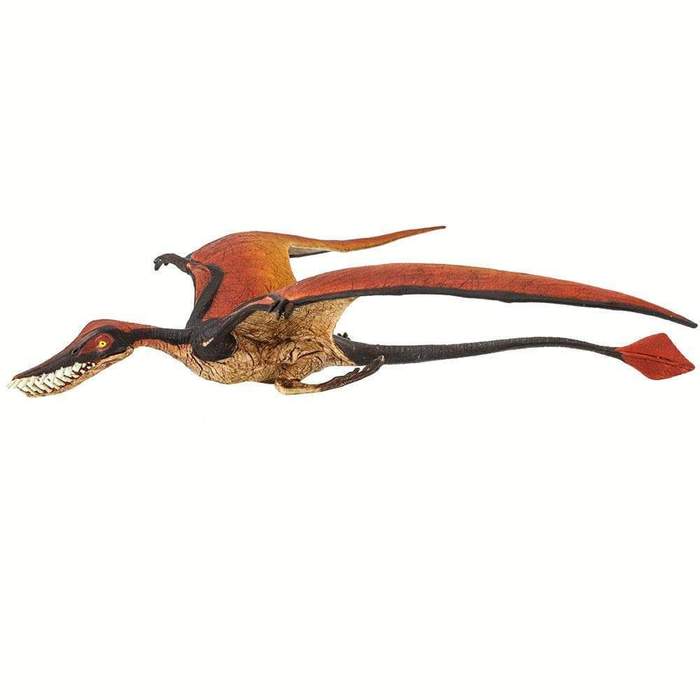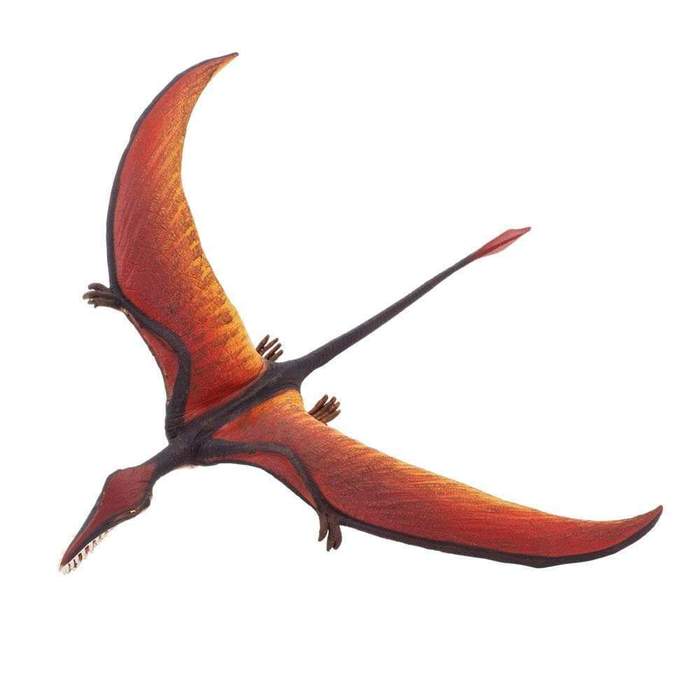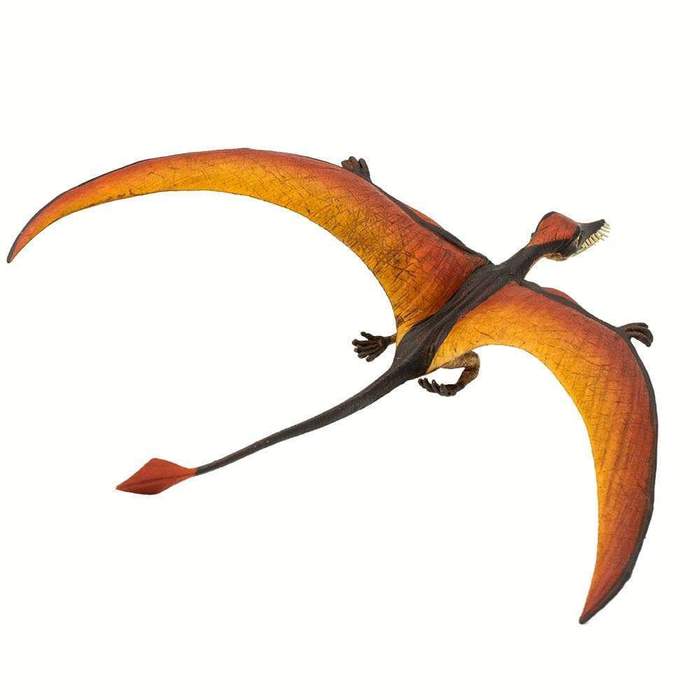1
/
of
5
Zoologishoppen
Safari Ltd - Rhamphorhynchus
Safari Ltd - Rhamphorhynchus
Regular price
179 SEK
Regular price
Sale price
179 SEK
Unit price
/
per
Taxes included.
Couldn't load pickup availability
Rhamphoryhnchus was a pterosaur, or flying reptile, that lived in the Late Jurassic (about 150 million years ago) in what is now Europe. Although it is superficially similar in some ways to bats and birds, it is not related to either group. It is easily recognizable by its beak-like snout and long tail. The best Rhamphorhynchus fossils come from a limestone quarry in Solnhofen, Bavaria. All of the fossils from this locality are incredibly well preserved, leaving little doubt about what the animals looked like in life.
Description
History
The first Rhamphorhychus fossil was found in 1825. It was first thought that it was an ancient bird, but under closer examination, it became clear that it had teeth, certainly not what they expected a bird to have. Pterodactylus, the first pterosaur, had just been described. A quick comparison told the scientists that the new ‘bird’ fossil was really a pterosaur, but unlike Pterodactylus, which had a short tail, this new pterosaur had a very long tail. Because of this difference, it became known as Rhamphorynchus (‘beak-tail) longicaudus (‘long tail’).
Scientific Name: Rhamphorhychus, meaning ‘beak-snout’.
Characteristics:
Rhamphorhynchus was a fairly large pterosaur. It had a very long snout full of long sharp teeth that were probably used to catch fish. Unlike some pterosaurs, Rhamphorhychus did not have a bony crest on its skull. It had a very long tail stiffened by ligaments. The end of the tail had a diamond-shaped vane that helped the animal steer as it flew through the air, a bit like a rudder. Although large adults had a wingspan of nearly six feet, hatchlings with wingspans of as little as one foot have also been found.
Size and Color:
This model is 7 inches long with an 8 inch wingspan. The top of the body and wings are bright reddish-brown outlined in dark gray, and the underside is light gray, reminiscent of some modern birds.
The Rhamphorhynchus is part of the Wild Safari® Prehistoric World collection
All of our products are Non-toxic and BPA free.
Size in cm: 18 L x 16.38 W x 4.7 H
This model is from 2010
Product Number: 300329
Description
History
The first Rhamphorhychus fossil was found in 1825. It was first thought that it was an ancient bird, but under closer examination, it became clear that it had teeth, certainly not what they expected a bird to have. Pterodactylus, the first pterosaur, had just been described. A quick comparison told the scientists that the new ‘bird’ fossil was really a pterosaur, but unlike Pterodactylus, which had a short tail, this new pterosaur had a very long tail. Because of this difference, it became known as Rhamphorynchus (‘beak-tail) longicaudus (‘long tail’).
Scientific Name: Rhamphorhychus, meaning ‘beak-snout’.
Characteristics:
Rhamphorhynchus was a fairly large pterosaur. It had a very long snout full of long sharp teeth that were probably used to catch fish. Unlike some pterosaurs, Rhamphorhychus did not have a bony crest on its skull. It had a very long tail stiffened by ligaments. The end of the tail had a diamond-shaped vane that helped the animal steer as it flew through the air, a bit like a rudder. Although large adults had a wingspan of nearly six feet, hatchlings with wingspans of as little as one foot have also been found.
Size and Color:
This model is 7 inches long with an 8 inch wingspan. The top of the body and wings are bright reddish-brown outlined in dark gray, and the underside is light gray, reminiscent of some modern birds.
The Rhamphorhynchus is part of the Wild Safari® Prehistoric World collection
All of our products are Non-toxic and BPA free.
Size in cm: 18 L x 16.38 W x 4.7 H
This model is from 2010
Product Number: 300329
Share

















